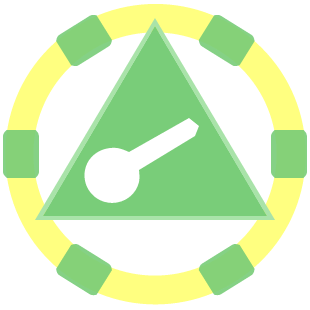Kirsty Wark: Ladies and gentlemen, welcome to the house of fun. This session is all about entertainment and interactivity. And what we're going to be discussing, really, is that interactivity is still in its infancy. Technology delivering entertainment by social media, crowd sourcing, social groups around new ways of playing games, consumers completely altering and owning games and bringing their own applications to them.
But before we start, just a word about something the chancellor forgot to mention. And it's a new Downing Street game. It's an app you can get, it's called "Build Your Own Cabinet." The idea is the government is going to have to respond to every suggestion for reforming the cabinet. And this week might be a very fair tall time to do that. Anyway, in the time it takes to hold this session, a ten-year-old will have devised a new online LEGO game, Endemol will have dreamt up a new brand for online and on iPhone, a group from Bangalore to Brighton will have set up a new online restaurant on Playfish, and somebody will have subverted Damon Albarn's Gorillaz project.
So this is about realizing where the innovation is coming from, where the monetization is coming from. Who leads the way? Is it the brand? Is it the consumer? We're going to have, hopefully, an hour of fun. Who would have imagined Facebook five years ago, great venture film social network opened everybody's eyes to what was actually going on. Delighted first of all to have Jørgen Vig Knudstorp, who is the CEO of the LEGO Group. The thing you need to know about Jørgen is, he has been CEO of LEGO for seven years. The most important is, he has four children between the ages of four and ten. And probably that is his best source of ideas. So I hope he's paying them very, very well. Bear in mind that LEGO was started 80 years ago, 1931, right in the middle of a recession. And it was almost -- I won't say dying on its feet, but it was certainly in need of rebooting. And Jørgen was the man who rebooted it. How did you reboot it?
Jørgen Vig Knudstorp: There are two things, forget about turnaround, talk about bailout.
You have to turn from turnaround to transformation if you want to reboot a company. I think there are two things that are extremely important. One is you need to find out what's the essence of that brand. By the way, it's not up to the management team to decide that. You need to speak to some other people, in my case, the people outside the door, who will showcase various LEGO pieces, they are not on my pay list. They are LEGO fans, the LEGO community.
They define what LEGO is all about. In our case, it's a creative building system which there's no equal of in the world. And, of course, if you're Google, it's all about search.
But you have to stick to that essence and go deep into the essence instead of expanding what you're all about.
Kirsty Wark: What was the thing that was unique about LEGO that was different from Mechano at the time, different from Playmobil. What is the LEGO thing?
Jørgen Vig Knudstorp: Well, the business idea is very simple. So this is me, of course. You'll all be able to see that.
Kirsty Wark: A little bit more hair.
Jørgen Vig Knudstorp: A little bit younger, when I had lots more hair. But when you take LEGO bricks apart, there are 7,000 pieces, they can all be built together, and when you put them together, they do not fall apart. And yet you only have to be two years old to take them apart. And that means you work in a structured, systematical fashion. At the same time, you can build anything you can imagine. So you work in a creative system which there's no equal of in the physical world. And getting back to the core of that was what it's all about.
Kirsty Wark: I looked up the LEGO Web site. And the what it still has which is extraordinary to me is a child like quality. And yet it's not about children necessity, is it? It's about adults as well.
Jørgen Vig Knudstorp: It is about children of all ages. And I think the thing is that everybody wants to create something. You want to create a great experience for the audience in here today. Somebody's going to hand in a report to his boss today. He wants to create something that is his own. What LEGO enables in children of all ages is to make something that is their own, to write rather than to read.
Kirsty Wark: To write rather than to read.
The way they write now is different because they have the physical experience at home.
But what is great is that they also do an enormous amount of absoverting.
Jørgen Vig Knudstorp: Yes. So if I can have the camera again, I'd like to show one example of this. I think we're online in here. Let's see. We're here on YouTube, hopefully. And I'd like to show you a little video that's been created by a LEGO person.
[ Video. ] In between battles, where Darth Vader can thrill and, I will have them (inaudible).
Kirsty Wark: So tell us, this is essentially Eddie Izzard, yeah?
Jørgen Vig Knudstorp: Yeah. So what happening is a child has found an Eddie Izzard DVD, I presume, stolen the sound track -- or an adult -- built a LEGO universe with LEGO bricks, made a stop motion video, and put it on YouTube.
And you might say that's very interesting. I think we'll hear from the record industry a little bit later how innocent that actually is. But I can certainly say that from our I.P. protection, which is something we worry a lot about, is that we're, of course, quite happy with this, because this video has now --
Kirsty Wark: Free advertising for LEGO.
Jørgen Vig Knudstorp: This video has now run in 15 million views in just this version and several million views in other versions of that same video. So what's happening is that Google has told me that there's more than 750,000 LEGO animated videos on YouTube. However, I only know of the LEGO Group putting less than 50 on. So the rest is user creativity. And that's happening within the game environment. It's obviously a bit more involved than what you see on the video. But it enables children of all ages to live the essence of the brand in a completely new way.
Kirsty Wark: So they take ownership of it completely?
Jørgen Vig Knudstorp: Yes.
Kirsty Wark: What I'm also interested in is how you adopt existing brands, most notably, Pirates of the Caribbean. What seems extraordinary to me is that people who are playing your LEGO games, which seem very simple, are probably playing a lot of high-end games as well. So children of all ages is what you're saying?
Jørgen Vig Knudstorp: Yes. I think you can enter a lot of partnerships. One of the huge assets of our company is that we are family-owned in the fourth generation, through 80 years. I'm the fourth CEO in 80 years. And we've never made an acquisition
Kirsty Wark: What is it with you Scandinavians? You just hang on to things.
Jørgen Vig Knudstorp: We've never made an acquisition. I don't suggest that's a good strategy for every company. But this is a company where the cultural fit, the ownership is practiced with enormous continuity. That means when you meet Disney, when you meet Lucas and you form partnerships, you can bring your essence to play, you can be uniquely LEGO in that context, which is what appeals kids to play pirates of the care beans, or star wars.
Kirsty Wark: You had McKinsey training and also your Merlin training as well. And as you say, four owners, four CEOs in 80 years. So did you bring something to the table that they hadn't even imagined? I mean, be frank with -- be old fashioned.
Jørgen Vig Knudstorp: Yes. That's why I think sort of one thing -- people always say this, how did you create the turnaround. My first answer is, I didn't. It was a transformation. It has two parts. The essence of what -- you have to answer, why do you exist, what's your unique identity. And the scary part is, very little. Why do companies exist? Most companies just do whatever everybody else is doing. When you narrow that down to what you are uniquely doing and you want to be a global player, it's not an awful lot. And for me, it's putting pieces together better than anything else. So that's one thing.
The other thing is, how do you then transform your business system, your business model.
Which is, people are saying, wow, you've really changed the LEGO brand.
I'm saying, no, the only thing I have not changed is the essence of the LEGO brand.
We have come home to where we began. But I have changed everything else. Or not I, but the company has. So how we do business, how we work with partners, how we do key management, how we've gone digital, how we operate our supply chain, so all the rest of it. So you have to create all of that to create the revitalization of the brand.
Kirsty Wark: How do you create the kind of social network around LEGO? It's is not just one-to-one, do you have groups.
Jørgen Vig Knudstorp: Yes. I have to admit that's something we get a lot of credit for and we can take no credit. The LEGO community was there already. When I became CEO, very few people knew of Facebook, but there was something called LUGNet LEGO User Group Online. I was not a member of the family. I was a McKinsey man. Still, the fans of LEGO, which there are millions of -- and they're organized, of course, now through Facebook and other ways -- view me as merely the administrator of their company, their brand, their passion. I'm the McKinsey guy who tries to make sure it doesn't die. So this is something you cannot just -- let's make a community. You have to have something that's authentic, that people are passionate about. Otherwise, the community is a marketing gimmick.
Kirsty Wark: Who leads what? Do your consumers -- if a ten-year-old comes up with a fantastic LEGO game that goes on line, do you pay them? You get all the upside.
Jørgen Vig Knudstorp: One of the worst things you can do with a community of fans is put them on the payroll. Yes, they would like a free LEGO set if they help out with something. But what they want is influence in what they're passionate about. They want to be listened to. One of the things I do, for instance, when I get an e-mail, and I do get quite a few e-mails, I always answer personally. And my lawyers are all over me, no, no, no, you did not write that. You write, we made a mistake and that color is brown not as it should be, they're going to put it on YouTube. They've never done so far.
Kirsty Wark: What is one of the things people have trusted you with that you have incorporated?
Jørgen Vig Knudstorp: So one of the things we do is, every week we have fans within our product development. And I'll just give a contrast between adults and kids. So we used an adult fan community for developing a generation of castles. They look very medieval, classical castle. And then we brought in the kids. The kids said, "Well, that's all very nice, but where's the dragon?" And the adults said, "Excuse me, kids. There were no dragons in the Medieval ages." And the kids say, "What's fun about that?" So that's the dialogue. Not single fans, right, but you get that, which is what I think IDEO would call design logic. You go through the eyes of the user instead of the eyes of the company.
Kirsty Wark: What about unintended consequences. The joy is you can make whatever you want. But there are some extraordinarily complicated things.
Jørgen Vig Knudstorp: Yes. I think there are a lot of things that can go wrong. People who abuse your I.P., we have had people who make concentration companies, pictures of the prophet Mohammed.
Kirsty Wark: It's interesting you say there's a problem with a concentration camp, because it's simply what perhaps children want to imagine.
Jørgen Vig Knudstorp: Well, the issue I saw was, the people said, well, LEGO obviously must have been involved in this. LEGO is sort of promoting this. What's fun about a concentration camp? But, see, the thing is that I think you can only do this sort of thing if you have a strong reputation, if you really have an honest dialogue with the stakeholders or the community. So it's a very delicate balance. But when you can establish that level of trust and genuine dialogue, you can get mostly very good things out of it.
Kirsty Wark: Well, of course, this is a commercial group in here, but what's the next plan?
Jørgen Vig Knudstorp: The issue for my case is that we've now done a transformation.
People are saying, that's great, so now you're on same ground. Good luck and retire. But, of course, transformation is always called for. Fundamentally, where I think LEGO stumbled was we had not adopted through the trend of digitization, globalization and not the planet, the agenda, and I see those is three huge adaptable challenges for the company. And I'm not sure how to answer them. So there's lots of work ahead.
Interview with Jørgen Vig Knudstorp - CEO of the LEGO Group
評論
| 尚無評論 |
| 登入, 若您想新增評論 |





